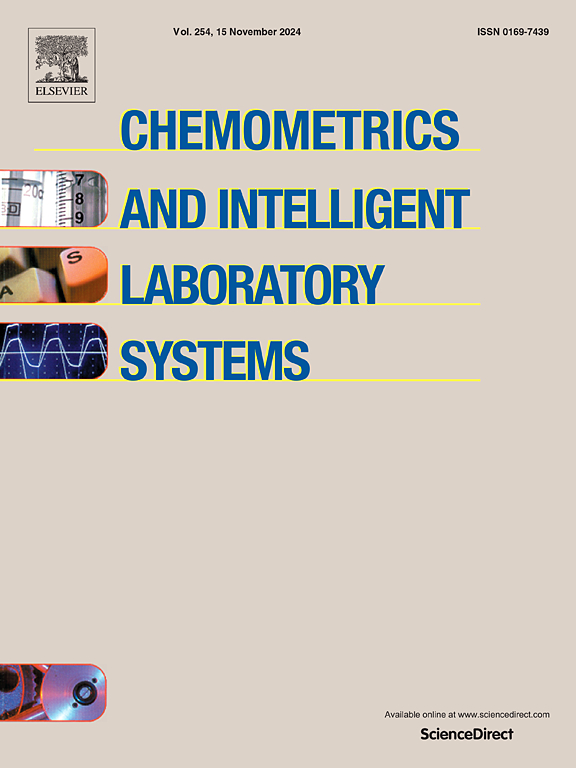多孔材料对水/废水源中离子吸附的数学建模:基于机器学习的方法
IF 3.7
2区 化学
Q2 AUTOMATION & CONTROL SYSTEMS
Chemometrics and Intelligent Laboratory Systems
Pub Date : 2024-10-16
DOI:10.1016/j.chemolab.2024.105250
引用次数: 0
摘要
本文利用输入参数 x 和 y 建立了物质浓度(C)预测模型,用于分析吸附过程。该研究采用了三种不同的机器学习模型--多层感知器(MLP)、多项式回归(PR)和支持向量机(SVM)--研究模型在捕捉输入和输出之间关系方面的功效。这些模型是根据通过多孔吸附剂从溶液中去除溶质的传质计算所获得的数据进行训练的。此外,还利用政治优化器(PO)对每个模型的超参数进行了优化。多层感知器模型表现突出,R 方得分为 0.9981,显示出与数据的良好拟合。此外,MLP 模型的 MAE 值和 MSE 值(分别为 7.94043E-01 和 2.0420E+00)也很低,令人印象深刻,这证明它有能力提供准确的预测并识别数据集中的潜在模式。多项式回归模型虽然在 R 平方得分(0.95929)方面略逊于 MLP,但其预测性能值得称赞。事实证明,支持向量机也是一个强有力的竞争者,其 R 方得分为 0.96055。本文章由计算机程序翻译,如有差异,请以英文原文为准。
Mathematical modeling of ions adsorption from water/wastewater sources via porous materials: A machine learning-based approach
This paper developed the predictive modeling of substance concentration (C) utilizing the input parameters x and y, for analysis of adsorption process. Employing three distinct machine learning models—Multilayer Perceptron (MLP), polynomial regression (PR), and Support Vector Machine (SVM)—the study investigates the efficacy of models in capturing the relationships between the inputs and output. The models are trained from data obtained from mass transfer calculations for removal of solute from solution via porous adsorbent. Furthermore, the hyper-parameters for each model are optimized through the utilization of the Political Optimizer (PO). The Multilayer Perceptron model emerges as a standout performer, showcasing an exceptional R-squared score of 0.9981, indicative of a robust fit to the data. Complemented by impressively low MAE and MSE values (7.94043E-01 and 2.0420E+00, respectively), the MLP model attests to its ability to provide accurate predictions and discern underlying patterns within the dataset. The polynomial regression model, while slightly trailing behind the MLP in terms of R-squared score (0.95929), revealed commendable predictive performance. Support Vector Machine also proves to be a formidable contender, boasting a robust R-squared score of 0.96055.
求助全文
通过发布文献求助,成功后即可免费获取论文全文。
去求助
来源期刊
CiteScore
7.50
自引率
7.70%
发文量
169
审稿时长
3.4 months
期刊介绍:
Chemometrics and Intelligent Laboratory Systems publishes original research papers, short communications, reviews, tutorials and Original Software Publications reporting on development of novel statistical, mathematical, or computer techniques in Chemistry and related disciplines.
Chemometrics is the chemical discipline that uses mathematical and statistical methods to design or select optimal procedures and experiments, and to provide maximum chemical information by analysing chemical data.
The journal deals with the following topics:
1) Development of new statistical, mathematical and chemometrical methods for Chemistry and related fields (Environmental Chemistry, Biochemistry, Toxicology, System Biology, -Omics, etc.)
2) Novel applications of chemometrics to all branches of Chemistry and related fields (typical domains of interest are: process data analysis, experimental design, data mining, signal processing, supervised modelling, decision making, robust statistics, mixture analysis, multivariate calibration etc.) Routine applications of established chemometrical techniques will not be considered.
3) Development of new software that provides novel tools or truly advances the use of chemometrical methods.
4) Well characterized data sets to test performance for the new methods and software.
The journal complies with International Committee of Medical Journal Editors'' Uniform requirements for manuscripts.

 求助内容:
求助内容: 应助结果提醒方式:
应助结果提醒方式:


